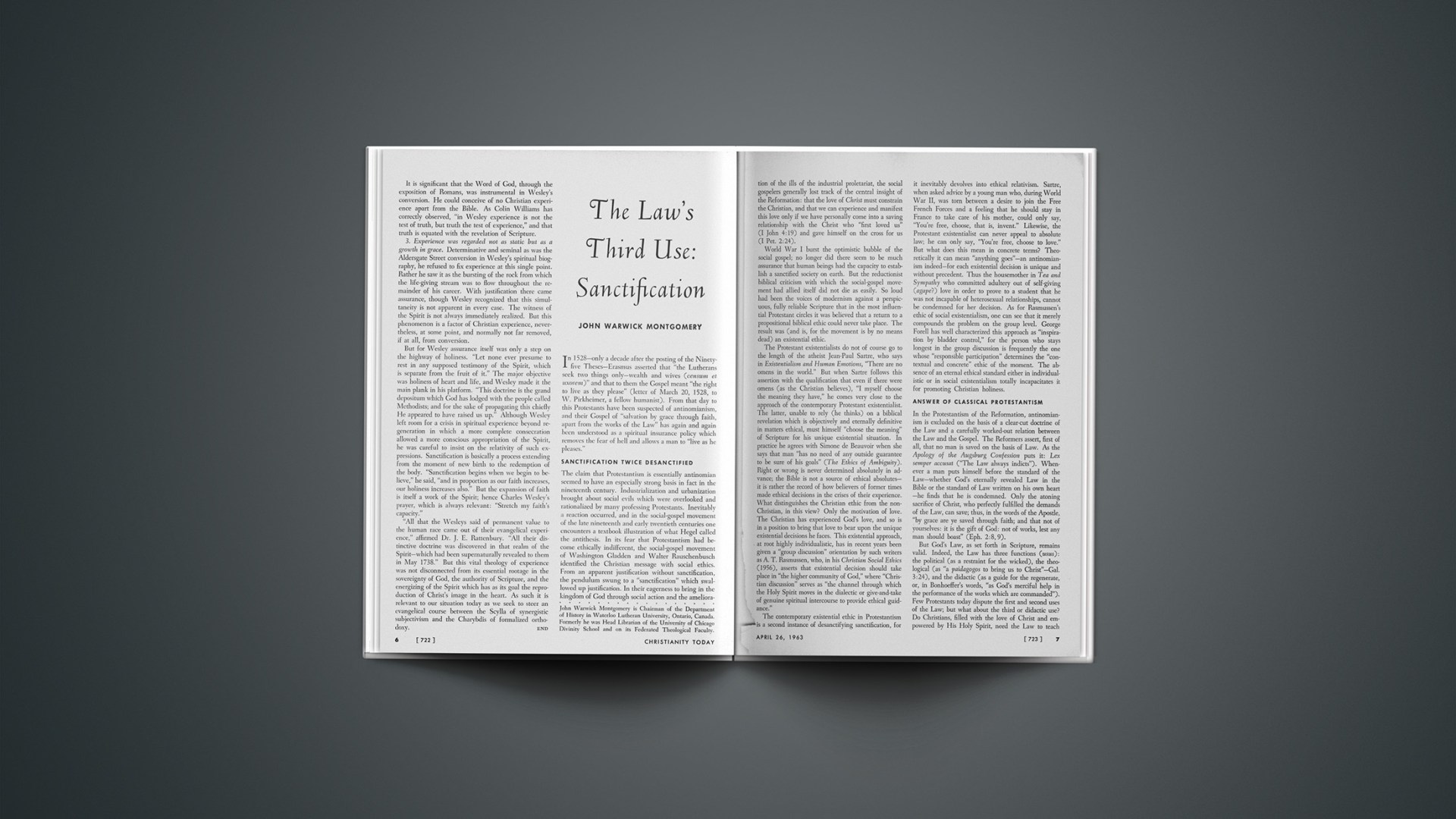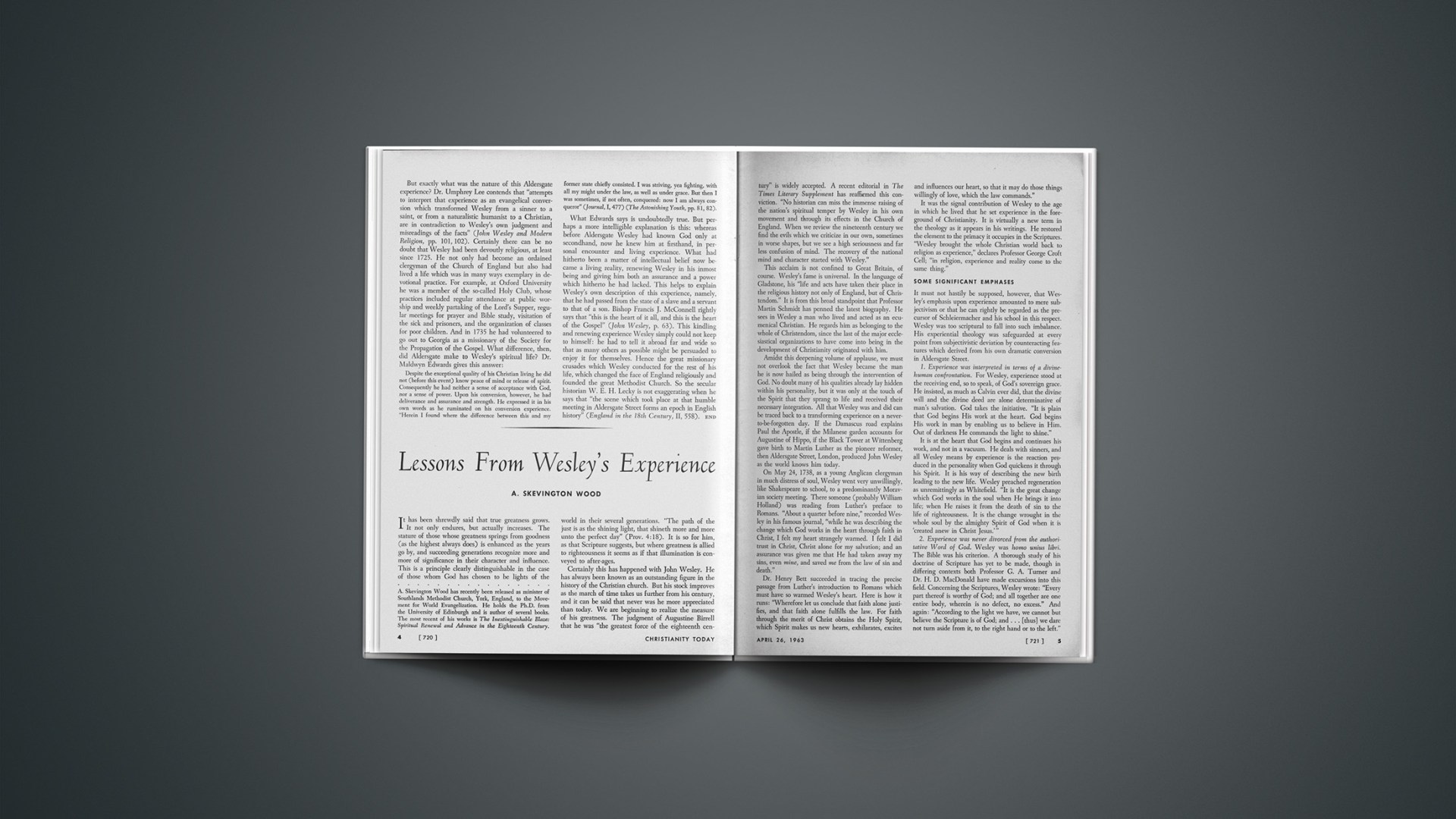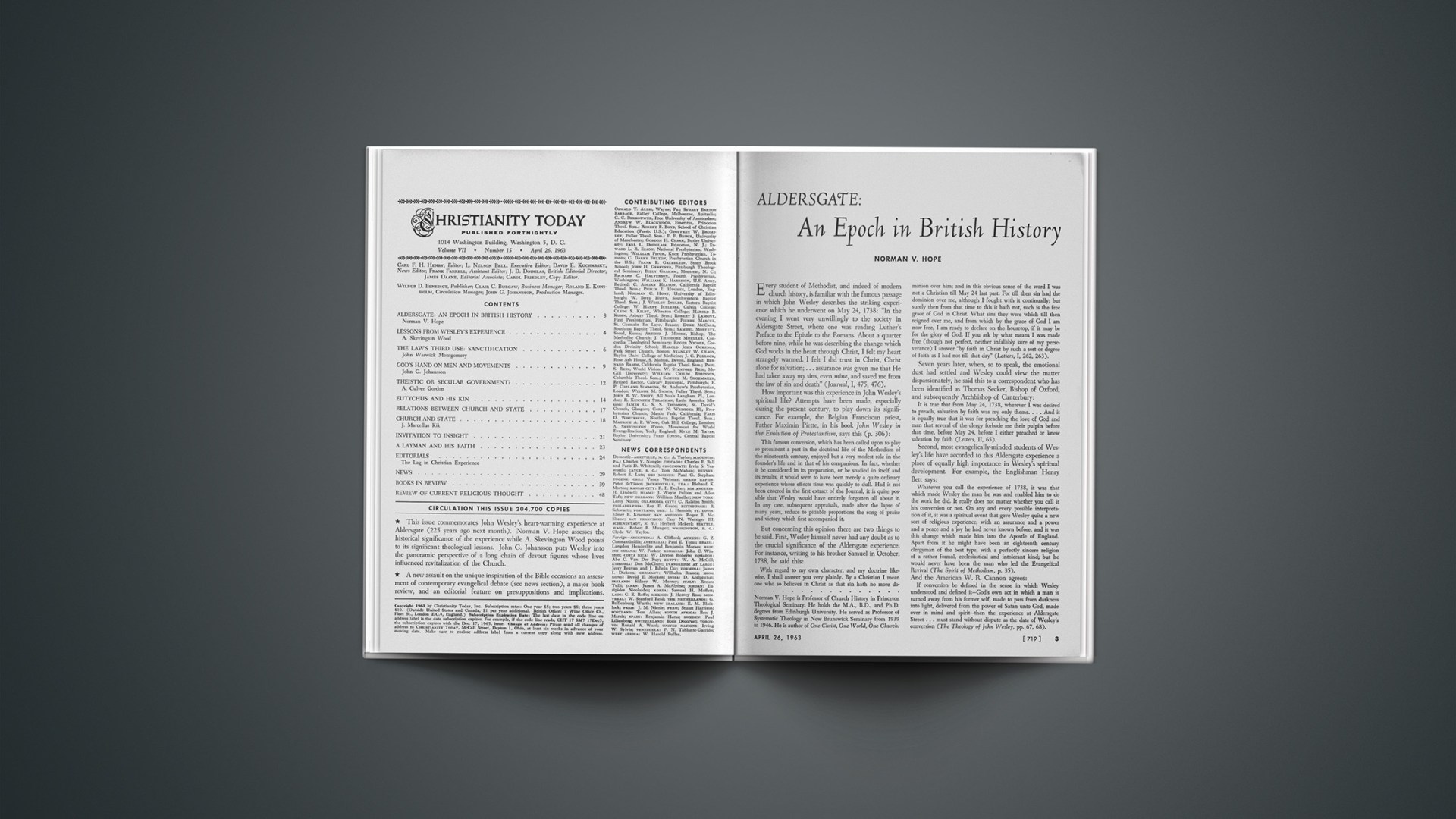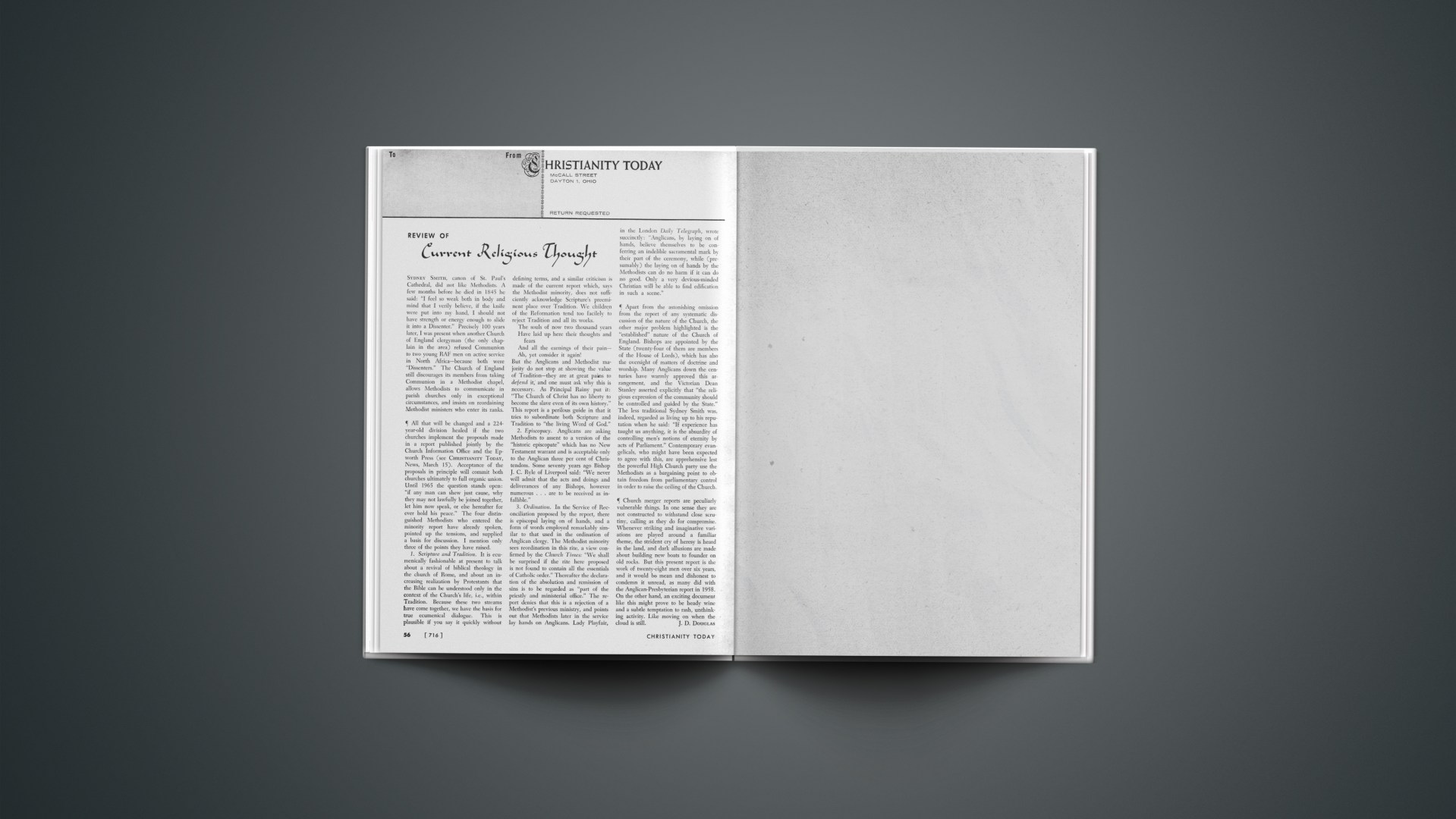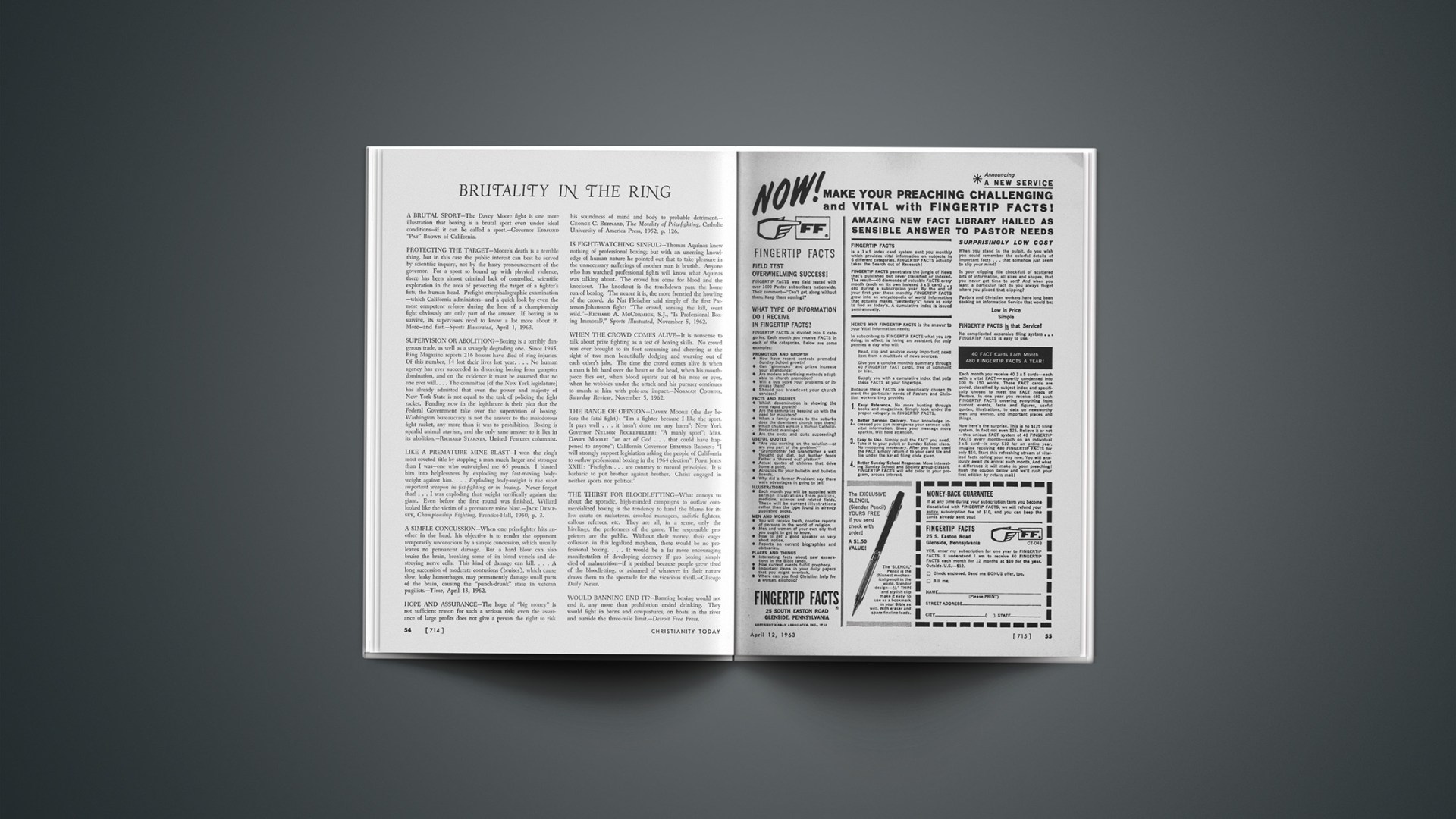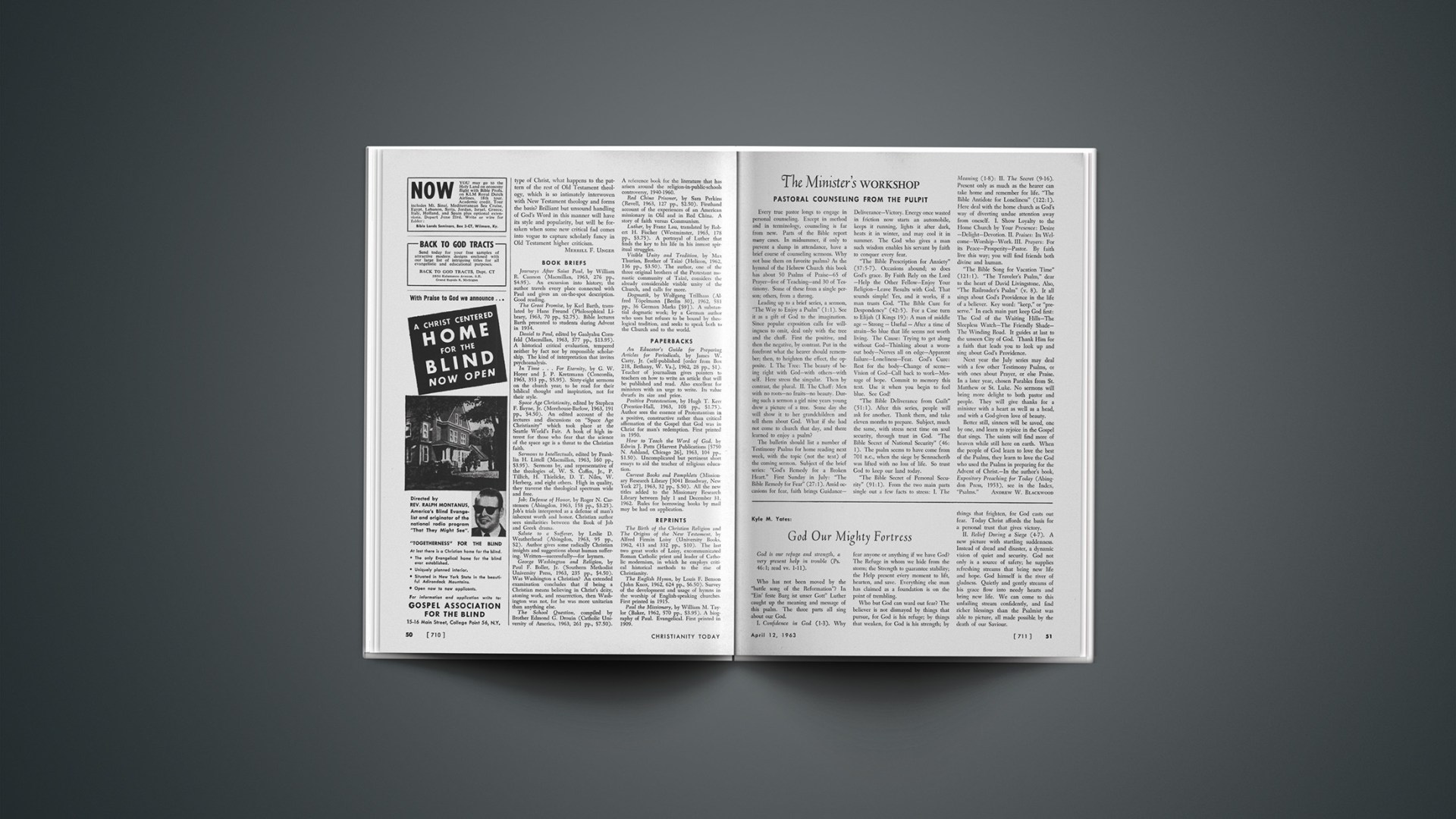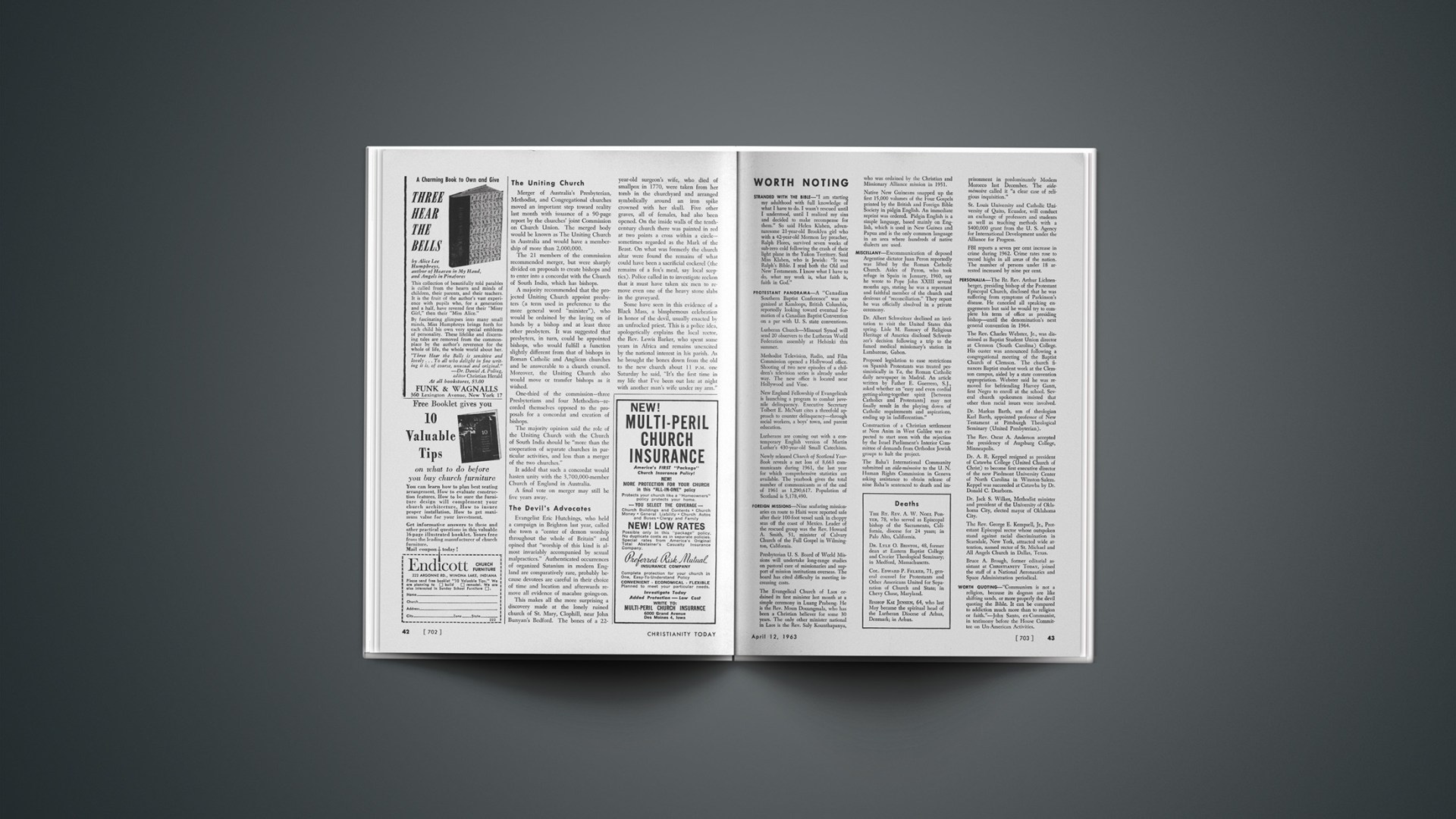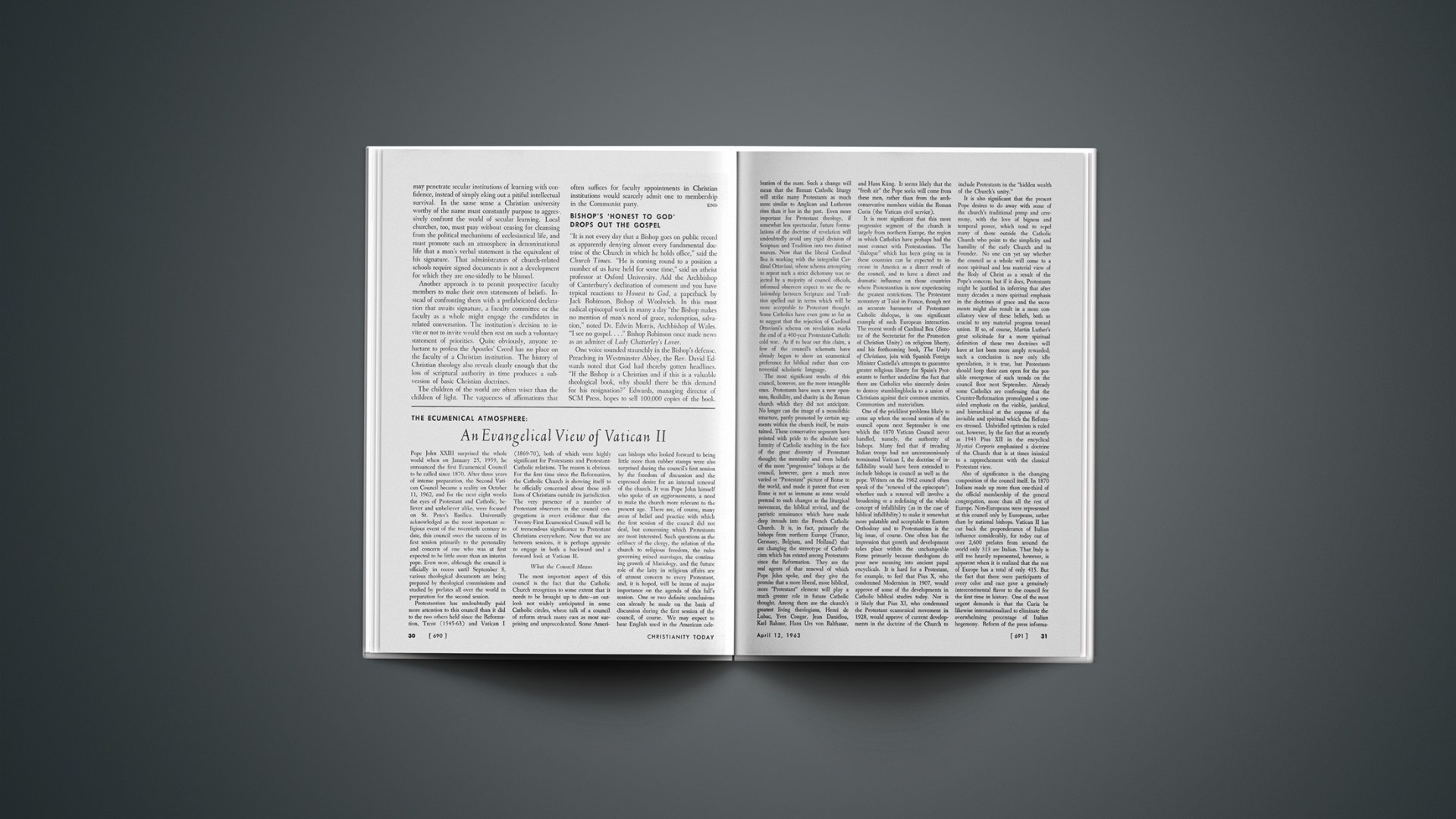In 1528—only a decade after the posting of the Ninety-five Theses—Erasmus asserted that “the Lutherans seek two things only—wealth and wives (censum et uxorem)” and that to them the Gospel meant “the right to live as they please” (letter of March 20, 1528, to W. Pirkheimer, a fellow humanist). From that day to this Protestants have been suspected of antinomianism, and their Gospel of “salvation by grace through faith, apart from the works of the Law” has again and again been understood as a spiritual insurance policy which removes the fear of hell and allows a man to “live as he pleases.”
Sanctification Twice Desanctified
The claim that Protestantism is essentially antinomian seemed to have an especially strong basis in fact in the nineteenth century. Industrialization and urbanization brought about social evils which were overlooked and rationalized by many professing Protestants. Inevitably a reaction occurred, and in the social-gospel movement of the late nineteenth and early twentieth centuries one encounters a textbook illustration of what Hegel called the antithesis. In its fear that Protestantism had become ethically indifferent, the social-gospel movement of Washington Gladden and Walter Rauschenbusch identified the Christian message with social ethics. From an apparent justification without sanctification, the pendulum swung to a “sanctification” which swallowed up justification. In their eagerness to bring in the kingdom of God through social action and the amelioration of the ills of the industrial proletariat, the social gospelers generally lost track of the central insight of the Reformation: that the love of Christ must constrain the Christian, and that we can experience and manifest this love only if we have personally come into a saving relationship with the Christ who “first loved us” (1 John 4:19) and gave himself on the cross for us (1 Pet. 2:24).
World War I burst the optimistic bubble of the social gospel; no longer did there seem to be much assurance that human beings had the capacity to establish a sanctified society on earth. But the reductionist biblical criticism with which the social-gospel movement had allied itself did not die as easily. So loud had been the voices of modernism against a perspicuous, fully reliable Scripture that in the most influential Protestant circles it was believed that a return to a propositional biblical ethic could never take place. The result was (and is, for the movement is by no means dead) an existential ethic.
The Protestant existentialists do not of course go to the length of the atheist Jean-Paul Sartre, who says in Existentialism and Human Emotions, “There are no omens in the world.” But when Sartre follows this assertion with the qualification that even if there were omens (as the Christian believes), “I myself choose the meaning they have,” he comes very close to the approach of the contemporary Protestant existentialist. The latter, unable to rely (he thinks) on a biblical revelation which is objectively and eternally definitive in matters ethical, must himself “choose the meaning” of Scripture for his unique existential situation. In practice he agrees with Simone de Beauvoir when she says that man “has no need of any outside guarantee to be sure of his goals” (The Ethics of Ambiguity). Right or wrong is never determined absolutely in advance; the Bible is not a source of ethical absolutes—it is rather the record of how believers of former times made ethical decisions in the crises of their experience. What distinguishes the Christian ethic from the non-Christian, in this view? Only the motivation of love. The Christian has experienced God’s love, and so is in a position to bring that love to bear upon the unique existential decisions he faces. This existential approach, at root highly individualistic, has in recent years been given a “group discussion” orientation by such writers as A. T. Rasmussen, who, in his Christian Social Ethics (1956), asserts that existential decision should take place in “the higher community of God,” where “Christian discussion” serves as “the channel through which the Holy Spirit moves in the dialectic or give-and-take of genuine spiritual intercourse to provide ethical guidance.”
The contemporary existential ethic in Protestantism is a second instance of desanctifying sanctification, for it inevitably devolves into ethical relativism. Sartre, when asked advice by a young man who, during World War II, was torn between a desire to join the Free French Forces and a feeling that he should stay in France to take care of his mother, could only say, “You’re free, choose, that is, invent.” Likewise, the Protestant existentialist can never appeal to absolute law; he can only say, “You’re free, choose to love.” But what does this mean in concrete terms? Theoretically it can mean “anything goes”—an antinomianism indeed—for each existential decision is unique and without precedent. Thus the housemother in Tea and Sympathy who committed adultery out of self-giving (agape?) love in order to prove to a student that he was not incapable of heterosexual relationships, cannot be condemned for her decision. As for Rasmussen’s ethic of social existentialism, one can see that it merely compounds the problem on the group level. George Forell has well characterized this approach as “inspiration by bladder control,” for the person who stays longest in the group discussion is frequently the one whose “responsible participation” determines the “contextual and concrete” ethic of the moment. The absence of an eternal ethical standard either in individualistic or in social existentialism totally incapacitates it for promoting Christian holiness.
Answer Of Classical Protestantism
In the Protestantism of the Reformation, antinomianism is excluded on the basis of a clear-cut doctrine of the Law and a carefully worked-out relation between the Law and the Gospel. The Reformers assert, first of all, that no man is saved on the basis of Law. As the Apology of the Augsburg Confession puts it: Lex semper accusat (“The Law always indicts”). Whenever a man puts himself before the standard of the Law—whether God’s eternally revealed Law in the Bible or the standard of Law written on his own heart—he finds that he is condemned. Only the atoning sacrifice of Christ, who perfectly fulfilled the demands of the Law, can save; thus, in the words of the Apostle, “by grace are ye saved through faith; and that not of yourselves: it is the gift of God: not of works, lest any man should boast” (Eph. 2:8, 9).
But God’s Law, as set forth in Scripture, remains valid. Indeed, the Law has three functions (usus): the political (as a restraint for the wicked), the theological (as “a paidagogos to bring us to Christ”—Gal. 3:24), and the didactic (as a guide for the regenerate, or, in Bonhoeffer’s words, “as God’s merciful help in the performance of the works which are commanded”). Few Protestants today dispute the first and second uses of the Law; but what about the third or didactic use? Do Christians, filled with the love of Christ and empowered by His Holy Spirit, need the Law to teach them? Are not the Christian existentialists right that love is enough? Indeed, is it not correct that Luther himself taught only the first two uses of the Law and not the tertius usus legis?
Whether or not the formulation of a didactic use of the Law first appeared in Melanchthon (Helmut Thielicke [Theologische Ethik] and others have eloquently argued for its existence in Luther’s own teaching; cf. Edmund Schlink, Theology of the Lutheran Confessions), there is no doubt that it became an established doctrine both in Reformation Lutheranism and in Reformation Calvinism. One finds it clearly set out in the Lutheran Formula of Concord (Art. VI) and in Calvin’s Institutes (II, vii, 12 ff.). It is true that for Luther the pedagogic use of the Law was primary, while for Calvin this third or didactic use was the principal one; yet both the Lutheran and the Reformed traditions maintain the threefold conceptualization.
An Essential Doctrine
The Third Use is an essential Christian doctrine for two reasons. First, because love—even the love of Christ—though it serves as the most powerful impetus to ethical action, does not inform the Christian as to the proper content of that action. Nowhere has this been put as well as by the beloved writer of such hymns as “I Heard the Voice of Jesus Say” and “I Lay My Sins on Jesus”; in his book, God’s Way of Holiness, Horatius Bonar wrote:
But will they tell us what is to regulate service, if not law? Love, they say. This is a pure fallacy. Love is not a rule, but a motive. Love does not tell me what to do; it tells me how to do it. Love constrains me to do the will of the beloved one; but to know what the will is, I must go elsewhere. The law of our God is the will of the beloved one, and were that expression of his will withdrawn, love would be utterly in the dark; it would not know what to do. It might say, I love my Master, and I love his service, and I want to do his bidding, but I must know the rules of his house, that I may know how to serve him. Love without law to guide its impulses would be the parent of will-worship and confusion, as surely as terror and self-righteousness, unless upon the supposition of an inward miraculous illumination, as an equivalent for law. Love goes to the law to learn the divine will, and love delights in the law, as the exponent of that will; and he who says that a believing man has nothing more to do with law, save to shun it as an old enemy, might as well say that he has nothing to do with the will of God. For the divine law and the divine will are substantially one, the former the outward manifestation of the latter. And it is “the will of our Father which is in heaven” that we are to do (Matt. 7:21); so proving by loving obedience what is that “good and acceptable, and perfect will of God” (Rom. 12:2). Yes, it is “he that doeth the will of God that abideth forever” (1 John 2:17); it is to “the will of God” that we are to live (1 Peter 4:2); “made perfect in every good work to do his will” (Heb. 13:21); and “fruitfulness in every good work,” springs from being “filled with the knowledge of his will” (Col. 1:9, 10).
Secondly, the doctrine of the Third Use is an essential preservative for the entire doctrine of sanctification. The Third Use claims that as a result of justification, it is a nomological fact that “if any man be in Christ he is a new creature: old things are passed away; behold, all things are become new” (2 Cor. 5:17). A man in Christ has received a new spirit—the Spirit of the living God—and therefore his relation to the Law is changed. True, in this life he will always remain a sinner (1 John 1:8), and therefore the Law will always accuse him, but now he sees the biblical Law in another light—as the manifestation of God’s loving will. Now he can say with the psalmist: “I delight in Thy Law” and “O how I love Thy Law!” (Ps. 119; cf. Ps. 1 and Ps. 19). Only by taking the Third Use of the Law—the “law of Christ” (Gal. 6:2)—seriously do we take regeneration seriously; and only when we come to love God’s revealed Law has sanctification become a reality in our lives. Ludwig Ihmels made a sound confession of faith when he wrote in Die Religionswissen-schaft der Gegenwart in Selbstdarstellungen: “I am convinced as was Luther that the Gospel can only be understood where the Law has done its work in men. And I am equally convinced that just the humble Christian, however much he desires to live in enlarging measure in the spirit, would never wish to do without the holy discipline of the tertius usus legis.” The answer to antionomianism, social-gospel legalism, and existential relativism lies not only in the proper distinction between Law and Gospel, as C. F. W. Walther so effectively stressed, but also in the proper harmony of Law and Gospel, as set forth in the classic doctrine of the Third Use of the Law.
END
WE QUOTE:
RELIGION IN AMERICA—We see great increases in religious attendance, increases in the treasuries of religious organizations—but do we find the power, the manifestation of God’s will in the lives of our people?… Nothing in our Judeo-Christian faiths tells us that we are to isolate God into a little compartment.… Jesus Christ himself went out where the people lived and walked, where the people worked and played.… The apostles stood in the market places of that day and performed their tasks and enunciated their gospel.… They may be the real need of America … not the perfunctory following of a faith, but the performance of that faith within the daily walk, seven days a week, not one.… We have been caught up in American life, in my opinion, by words, words, words. We sometimes talk a problem to death. You know the old saying, “Anytime three Americans get together they elect officers”—we are so organization minded! But the words of our faith must take meaning and become rooted in action.—Governor MARK HATFIELD of Oregon to the Fourteenth Anniversary Dinner of “Religion in American Life.”

